8 Best Newtonian Telescopes Actually Worth the Money (2024)
The fact is that the best Newtonian telescopes are fantastic. They are optically “fast,” simple to use, and come at an affordable price (compared to other types of telescopes).
Keep in mind that Newtonian telescopes require collimation (alignment), but it’s relatively easy to learn.
Best Newtonian Telescopes
1. Orion 6″ f/4 Newtonian Astrograph Reflector Telescope

When it comes to Newtonian telescope design, very few others can beat them for value for money. The Newtonian has an affordable price and offers a huge 6″ aperture and a 610mm focal length.
The Orion Newtonian Astrograph is the best Newtonian telescope for astrophotography. It has an optically fast focal ratio (f/4), making it the perfect choice for going after wide-field images of distant deep-space objects.
It has a compact length of 22.5’’ and weighs only 12.7lb assembled, so it doesn’t need an enormous mount. It comes with 2 heavy-duty hinged tube rings, 8×50 finder scope, and a dovetail mounting bar.
The only negative aspect is that this 6-inch Newtonian telescope is not ideal for beginners, but it is suitable as a 2nd telescope for any amateur astrophotographer.
What we liked
- Very well priced
- Very fast 6-inch aperture reflector
- Compact size and weight
- Comes with 2 tube rings, a finder scope, and a dovetail bar
What we didn’t like
- Not ideal for total beginners
Aperture: 6″ (610mm)
Magnification: 21-300x
Focal length: 610mm
Mount type: Optical Tube without Mount
Weight: 12.7 lbs
Features: Very well priced
Best for: Astrophotography
2. Celestron Omni XLT 150mm Telescope
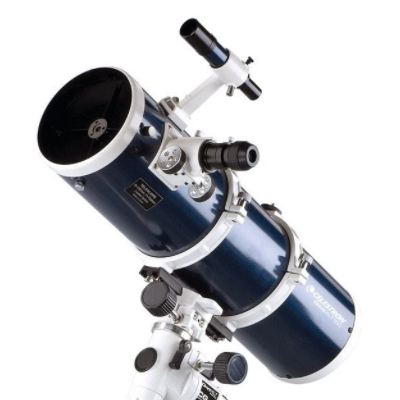
The next newton’s reflecting telescope we review is the Celestron Omni XLT 150mm Telescope. The scope has a Newtonian Reflector Optical Tube, with hand-selected glass. Each air-to-glass surface is fully multi-coated with StarBright XLT anti-reflective coatings. You will notice the difference when you see the fabulous crystal clear, crisp images.
The Celestron Omni XLT has a large 150mm aperture and a 750mm focal length. For an aperture of this size, these Newtonian telescopes
offer exceptional value for money. It comes with one 25mm eyepiece, a 6×30 optical Finderscope, and a 1.25″ Star Diagonal. The Stainless Steel tripod is heavy-duty and comes pre-assembled. It also has a handy accessory tray and bubble level for correct leveling.
For ease of use, the mount is an ultra-precise German CG-4 manual EQ mount with slow-motion controls that are smooth and simple to operate.
With a database of 10,000 celestial objects in the Sky Level 1 planetarium Software, the family will soon become very adept at finding objects to look at. Enjoy seeing Saturn’s rings, Jupiter’s moon, polar ice caps on Mars, and distant star clusters.
What we liked
- 150mm aperture, 750mm focal length
- High quality, hand selected optical glass
- Ultra-precise German CG-4 manual EQ mount
- 25mm eyepiece, 6×30 optical Finderscope, 1.25” Star Diagonal
- Ball bearings in both axis of the mount for smooth performance
- Easy setup with no tools required
- Sky Level 1 planetarium Software with 10 000
What we didn’t like
- Higher price
- Only one eyepiece
- Not computerized
Aperture: 6″ (150mm)
Magnification: 30x
Focal length: 750mm
Mount type: German CG-4 manual EQ mount
Weight: 45.5 lbs (20.6kg)
Features: Large aperture, easy setup
Best for: Beginners to intermediates
3. Celestron AstroFi 130mm Wi-Fi Reflector Telescope
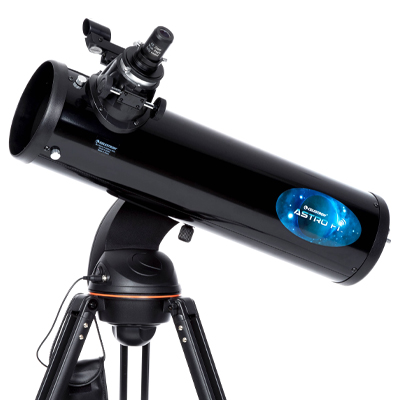
For stargazers who are moving to more advanced levels, a computerized mount is a way to go. No more manual tracking of celestial objects – the telescope does the work for you! This is a massive step up and need not cost a fortune.
The Celestron AstroFi 130mm Wi-Fi Reflector Telescope is the Best Newtonian reflector telescope that allows you to control your telescope via integrated Wi-Fi using the free Celestron SkyPortal app. The app is compatible with iPhone, iPad, and Android devices.
For those of you who are new to computerized telescopes, it creates its own wireless connection, so it can communicate with your device even if you are in remote areas away from the signal. Setting it up is fast and easy.
Using the Celestron SkyAlign technology, you center any three bright objects in the eyepiece and your telescope will calculate its position. It can even generate a Sky Tour, giving you all the best celestial objects to view, calculated on where you are on the planet!
The Astro Fi 130mm Newtonian offers a large 130mm aperture and a 650mm focal length. The fully coated glass optics provide sensational views of the Moon, planets, star clusters, nebulae, and more. The shorter focal length gives you a fabulous wide field of view.
It comes with 2 eyepieces, a Kellner 25mm and a 10mm. Also included is a StarPointer Finderscope and a mirror star diagonal. For holding your accessories, there is an accessory tray. One concern with computerized mounts is where to put your smartphone or tablet. The Astro Fi 130mm Newtonian has a special rubber-lined area to hold them safely.
What we liked
- Large 130mm aperture
- Shorter 650mm focal length for wide field view
- 2 eyepieces, 25mm and 10mm
- Equatorial mount with Go-To system
- Has its own wireless connection
- Rubber stand for iPhones and tablets
- Celestron SkyAlign technology
What we didn’t like
- Higher price
- Some users may prefer manual controls
- Learning curve to get started
Aperture: 5.1″ (130mm)
Magnification: 26x, 65x
Focal length: 650mm
Mount type: Equatorial with Go-To system
Weight: 17 lbs (7.7kg))
Features: Well priced computerized newton’s telescope
Best for: Intermediates
4. Celestron NexStar 130 SLT Series Newtonian Reflector Telescope
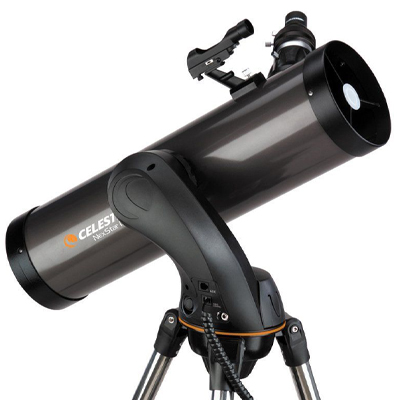
If you are looking for a computerized Newtonian reflector telescope with an Altazimuth GoTo Mount, this is a great option for beginners to intermediate stargazers. Using the SkyAlign function, you simply input the date, time, and location into the hand control. You then point the scope to any three bright celestial objects in the sky and the telescope slews to the object you want.
The scope has a 5.1” aperture and a focal length of 650mm. It comes with a Red Dot StarPointer Finderscope to help with alignment. The telescope kit includes 2 eyepieces, a 25mm with a 26x magnification and a 9mm with a 72x magnification.
With the Newtonian focus, you will easily see Saturn’s rings, the Moon’s craters, Jupiter’s cloud bands, and fainter galaxies. For ease of use, there is an Internal battery compartment to prevent the cord from wrapping.
This newton telescope includes an adjustable, full-height steel tripod making it ideal for kids and adults. There is a quick-release fork arm mount for quick setup, and you do not need tools. Also included is an accessory tray to keep all your bits and pieces close at hand.
Weighing only 18 lbs, it is easy to pack up and take along on a stargazing trip. You will enjoy The Sky Level 1 planetarium software. With a database of more than 40,000 stars, galaxies, nebulae, clusters, and planets, you are set for years of fun stargazing with this Best Newtonian telescope.
What we liked
- Computerized Altazimuth GoTo mount
- 5.1” aperture, 650mm focal length
- 2 eyepieces, 25mm, 9mm
- Full full-height adjustable steel tripod
- StarPointer Finderscope for easy alignment
- Internal battery compartment prevents cord wrap
- Database of more than 40,000 celestial objects
What we didn’t like
- Computerized technology may not suit everyone
- Higher price for beginners
Aperture: 5.1” (130mm)
Magnification: 26x – 72x
Focal length: 650mm
Mount type: Motorized altazimuth mount, computerized hand control
Weight: 18 lbs (8.16 kg)
Features: Computerized GoTo mount, 2 eyepieces
Best for: Great newton reflecting telescope for serious beginners to intermediates
5. Celestron PowerSeeker 127EQ Newtonian Telescope
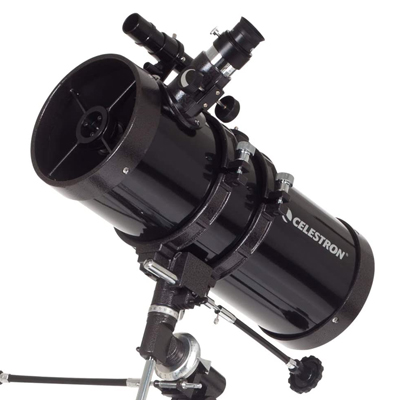
The next Newtonian reflector telescope for review is the Celestron PowerSeeker 127EQ Newtonian Telescope. It offers great value for money with a combination of quality, power, and features. This is a great beginner telescope that will take a young stargazer to the intermediate level.
It features a large 5” (127mm) aperture and a 1000mm focal length. The all-coated glass optical components offer enhanced image brightness and clarity. Newtonian reflectors generally have larger apertures and greater light-gathering power. This allows you to see and resolve fainter details of deep-sky objects.
Included in the kit are 2 eyepieces, a 20mm and a 4mm. There is also a 3x 1.25″ Barlow Lens that triples the magnification of the lenses. For easy locating of objects, you have a 5×24 Finderscope. The Celestron PowerSeeker 127EQ Telescope comes with a sturdy equatorial mount for tracking the sky. Set up is easy and fast. The mount has a slow-motion altitude rod for smooth and accurate pointing. Adjust the rod to the desired position and secure it by tightening the cross knob.
This compact Newtonian reflector telescope is ideal for taking along on a stargazing weekend away from city lights. You can download the Starry Night Basic Edition astronomy software with 10 000 celestial objects and printable sky maps. The software will run on your Mac, PC, or laptop.
What we liked
- 5″ (127mm) aperture
- 1000mm focal length
- 2 eyepieces, 25mm and 4mm
- 3x 1.25″ Barlow Lens to triple magnification
- 5×24 Finderscope
- Sturdy equatorial mount
- Slow-motion controls for smooth and accurate pointing
What we didn’t like
- May be too simple for more advanced users
- The quality of the eyepiece could be better
Aperture: 5″ (127mm)
Magnification: 50x – 250x
Focal length: 1000mm
Mount type: Equatorial mount
Weight: 21.38 lbs (9.7 kg)
Features: Well priced, 2 eyepieces, 3x Barlow lens
Best for: Beginners
6. Celestron AstroMaster 114EQ Telescope
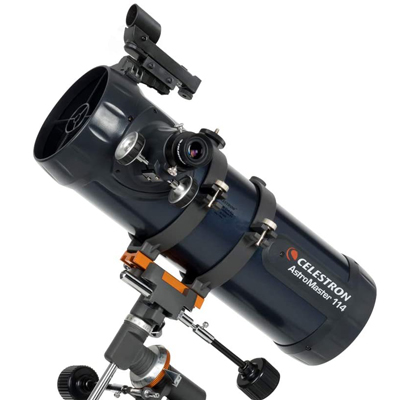
The Celestron AstroMaster 114EQ Telescope is a very well priced Celestron Newtonian telescope ideal for beginners. I chose this one for my son’s birthday and as a family, we are having a blast viewing the Moon, planets, star clusters, and nebula.
It has an ample 114mm (4.49 in) aperture and a 1000mm focal length. There are 2 eyepieces, a 20mm that gives 50x magnification and a 10mm that gives 100x magnification. It has a permanently mounted StarPointer Finderscope to easily locate objects.
The CG-2 German Equatorial mount has Setting circles to track sky objects. Because it shows an erect image, this Newtonian telescope is ideal for terrestrial and astronomical use. My wife enjoys watching animals and birds on a safari trip.
The tripod comes pre-assembled and offers a rigid, sturdy platform. We don’t worry about it toppling over. To hold all our accessories, there is a deluxe accessory tray. I always enjoy a Newtonian telescope kit that has loads of educational information for the children, and this one does not disappoint. It has TheSkyX – First Light Edition astronomy software with a 10,000 object database, printable sky maps, and 75 enhanced images.
What we liked
- 114mm (4.49 in) aperture
- 1000mm focal length
- 2 eyepieces, 20mm and a 10mm
- Easy set up no tool required
- Permanently mounted StarPointer Finderscope
- CG-2 German Equatorial mount with Setting circles
- Pre-assembled sturdy Tripod
What we didn’t like
- May be too simple for more advanced users
- Some users would like a Barlow lens included
Aperture: 4.49″ (114mm)
Magnification: 50x – 100x
Focal length: 1000mm
Mount type: CG-2 German Equatorial mount
Weight:
Features: Well priced, 2 eyepieces
Best for: Beginners, terrestrial and celestial viewing
7. Orion Premium 190mm f/5.3 Mak-Newt Astrograph Telescope
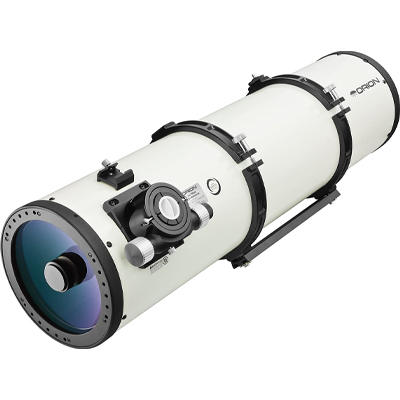
If you want to explore the magical world of astrophotography, the Orion Premium 190mm f/5.3 Mak-Newt Astrograph Telescope is a great buy. It matches the capabilities of very expensive models at a fraction of the price.
This best Maksutov-Newtonian telescope has a massive 190mm (7.5″) aperture and a focal length of 1000mm for stunning views. It has a Crayford focuser that includes 2″ and 1.25″ compression ring adapters for insertion of your eyepieces. The secondary mirror is a large 64mm, which increases the field of illumination. The scope has a very wide field of view that is undistorted and crystal clear.
This is a premium mak newt telescope for advanced users who want to view and photograph fainter deep sky objects. It does come at a higher price. For your astrophotography, you can attach a camera such as a DSLR or an Orion StarShoot astrophotography camera.
The telescope does not come with a mount. You will have to purchase one separately or use an existing one. For attachment, the Orion Maksutov-Newtonian kit has a narrow Vixen-style dovetail mounting bar and two tube rings.
What we liked
- Large 190mm aperture
- 1000mm focal length
- Narrow Vixen-style dovetail mounting bar
- Two tube rings
- 2″-to-1.25″ telescope eyepiece adapter
- Focuser extension
- Maksutov-Newtonian gives exceptional views of deep sky objects
What we didn’t like
- Higher price tag
- Does not come with a mount
Aperture: 7.5″ (190mm)
Magnification: 27x
Focal length: 1000mm
Mount type: Not supplied
Weight: 22 lbs (9.97kg)
Features: Premium telescope for astrophotography
Best for: Advanced users, deep sky viewing
8. Orion 8″ f/3.9 Newtonian Astrograph Reflector Telescope
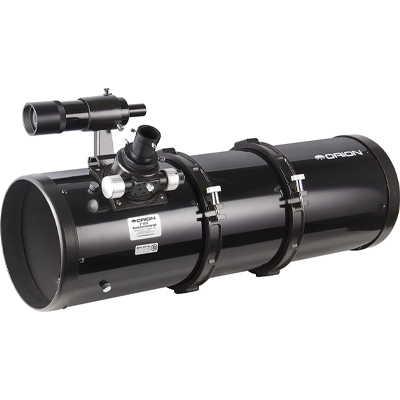
When you are hooked on stargazing like our family, there comes a time when you want to upgrade to a large, powerful Best Newtonian reflector telescope and try your hand at astrophotography.
The Orion 8″ f/3.9 Newtonian Astrograph Reflector Telescope is a great choice. It is well priced in the mid-range and offers exceptional features. It has a massive 8” (203mm) aperture and an 800mm focal length. The telescope comes with a 9×50 Finderscope for locating objects.
Be aware that these bigger scopes often do not come with a mount and you need to provide your own. This is supplied as a Newtonian Astrograph reflector telescope optical tube and you will have to buy a mount separately. For doing this, you have cast aluminum tube rings equipped with both upper and lower 1/4″-20 mounting holes. You also need to supply your own eyepieces.
The scope has handy extension adapters for the fitting of 2″ and 1.25″ telescope eyepieces. The imaging on this telescope is exceptional. The large 70mm minor axis secondary mirror provides full field illumination for DSLR cameras for amazing astrophotography images.
Both the primary and secondary mirrors have enhanced reflectivity aluminum coatings with a protective quartz overcoat. When you are not using the scope for astrophotography, you can see incredible views of celestial objects from the Moon to planets, Messier objects, far-away star clusters, and galaxies.
What we liked
- Large 8” (130mm) aperture, 800mm focal length
- 9×50 Finder scope
- Cooling accelerator fan and battery pack
- 2 Hinged tube rings
- 2″ and 1.25″ Extension adapters for visual eyepieces
- Starry Night Special Edition astronomy software
- Instruction manual
What we didn’t like
- Higher price
- For more advanced users
- Must purchase mount and eyepieces separately
Aperture: 8” (203mm)
Magnification: N/A
Focal length: 800mm
Mount type: Not supplied
Weight: 17.5 lbs (7.9kg)
Features: Well priced high-quality telescope
Best for: Astrophotography
FAQ
What is a Newtonian telescope?
Sir Isaac Newton invented these telescopes in 1668. They are also known as reflecting telescopes. They use mirrors in the place of lenses, which reflect the light into eyepieces, giving crystal clear images. There are different types of Newtonian telescopes, including the Maksutov Newtonian.
What is a Newtonian telescope used for?
Newtonian telescopes are ideal for home use. You can view craters on the Moon, Saturn’s rings, Jupiter’s moons, and the ice caps on Mars. You will also see far-away star clusters, galaxies, and nebulae. You can also use some Newtonian reflectors for terrestrial viewing.
What is the difference between a Newtonian and Dobsonian telescope?
Dobsonian telescopes use thinner mirrors and generally offer larger apertures than mak newt models. The main difference is the mount. Dobsonian telescopes have altazimuth mounts. Newtonian telescopes are mostly larger than Dobsonian telescopes. To confuse things a bit, Dobsonian telescopes use Newtonian optics!
Are Newtonian telescopes good?
Newtonian telescopes are very good for beginners, intermediate and advanced users. They offer a large range of features at very affordable prices. They are easy to set up and portable enough to take on a trip. Buying a Newtonian telescope is a great way to start astronomy as a hobby.
How does a Newtonian telescope work?
Newtonian telescopes have a concave spherical or parabolic primary mirror at the back of the telescope. This mirror collects and focuses the incoming light onto a flat secondary mirror. The secondary mirror then reflects the image into the eyepiece.
How many mirrors does a Newtonian telescope have?
A Newtonian reflecting telescope has two mirrors. The first is a concave spherical or parabolic primary mirror located at the back of the telescope. The secondary mirror is located at the front of the tube and reflects the image into the eyepiece.


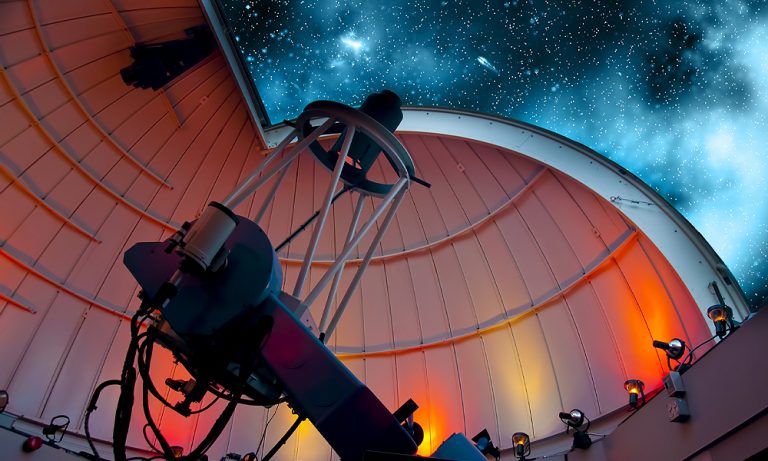
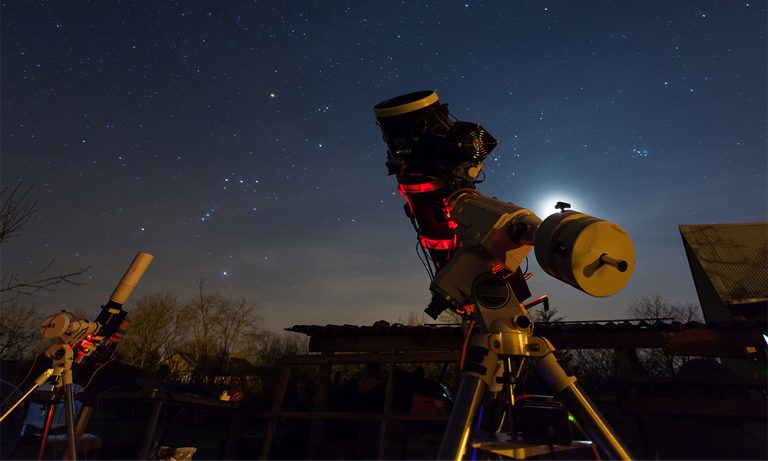
![12 Best Telescopes for Deep Space Objects [2024]](https://www.planetguide.net/wp-content/uploads/2019/12/Depositphotos_144986289_l-2015-768x512.jpg)
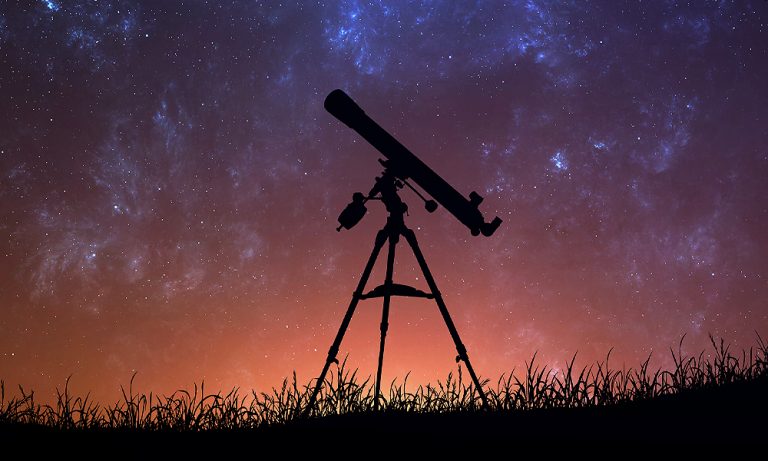
![12 Best Telescopes for Kids in 2024 [Toddlers to Teens]](https://www.planetguide.net/wp-content/uploads/2019/12/Depositphotos_2254021_l-2015-768x512.jpg)